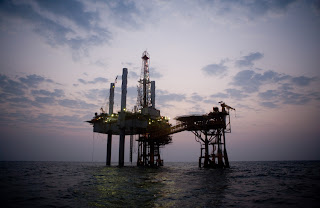Before the Oilholic hit Sydney, there was Melbourne. However, given that flying to Melbourne from London, via Hong Kong had given one a fair collection of air miles, it was time get some rail miles into the mix and travel from the heart of Victoria to the hub of New South Wales with assistance of a diesel-powered Paxman VP185 12-cylinder locomotive.
Flying would have taken one up in the air and down into Sydney in little over an hour, but the train journey took 11.5 hours zipping past mountain sides, streams, woodlands, lush green farming country, industrial heartlands, the odd wallaby, countless sheep and towns not normally on tourists’ itinerary accompanied by with changeable weather.
Leaving Melbourne’s Southern Cross Station at 8:30am, the 'XPT' or express train headed to Benalla, Wangaratta, Albury, Culcairn, Henty and The Rock stations in that order.
If you know your cricket, next came Wagga Wagga, birthplace of Aussie greats Geoff
Flying would have taken one up in the air and down into Sydney in little over an hour, but the train journey took 11.5 hours zipping past mountain sides, streams, woodlands, lush green farming country, industrial heartlands, the odd wallaby, countless sheep and towns not normally on tourists’ itinerary accompanied by with changeable weather.
Leaving Melbourne’s Southern Cross Station at 8:30am, the 'XPT' or express train headed to Benalla, Wangaratta, Albury, Culcairn, Henty and The Rock stations in that order.
If you know your cricket, next came Wagga Wagga, birthplace of Aussie greats Geoff
 Lawson, Michael Slater and Mark Taylor, the first major town you hit when the train crosses into New South Wales.
Lawson, Michael Slater and Mark Taylor, the first major town you hit when the train crosses into New South Wales.

Following Wagga Wagga, came Junee and Cootamundra (birthplace of the late cricketing great Sir Donald Bradman), followed by Harden, Yass Junction, Goulburn and Mossvale bringing the suburbs of Sydney in sight some 10 hours later.
Forever etched in one’s memory – that where were you moment when Donald Trump won the US presidency – well the Oilholic was in Campbelltown just prior to hitting Sydney central!
Forever etched in one’s memory – that where were you moment when Donald Trump won the US presidency – well the Oilholic was in Campbelltown just prior to hitting Sydney central!
There was no Wi-Fi; but a purser on the train bellowed the results to I must say, a very surprised carriage!
The Oilholic’s assessment – the journey might well have been between Victoria and New South Wales, but in a cool eclectic sort of way, a throwback to 1980s British Rail.
The Oilholic’s assessment – the journey might well have been between Victoria and New South Wales, but in a cool eclectic sort of way, a throwback to 1980s British Rail.
 Afterall, it was the British Rail intercity service that its Aussie cousin was modelled on back in April 1982, and all those years later it still exudes that rustic charm, which may or may not be to your taste.
Afterall, it was the British Rail intercity service that its Aussie cousin was modelled on back in April 1982, and all those years later it still exudes that rustic charm, which may or may not be to your taste. In 2016, the XPT yours truly got on at Melbourne saw the Paxman locomotive with four low-pressure turbochargers and two high-pressure turbochargers giving it 1,492 kW / 2,000 horsepower lug six clunky carriages (seven during peak times) between Melbourne and Sydney, with one being a sleeper car for those who can’t handle the arduous journey sitting up. Two trains go in each direction dialy.
There’s a pantry car too, serving hot meals, cold beer and plenty of sausage rolls. This blogger loved a throwback to the old days. Some, including Aussie mates, say it’s for the train buffs only or a dumb touristy move.
 If that’s the case, the Oilholic is guilty as charged. That’s all from Australia folks as an amazing week comes to a close, New Zealand calling next!
If that’s the case, the Oilholic is guilty as charged. That’s all from Australia folks as an amazing week comes to a close, New Zealand calling next! One leaves you with a view of the Sydney Opera House (Click on all images to enlarge); seeing it means one more item off the bucket list. Keep reading, keep it ‘crude’!
To
follow The Oilholic on Twitter click here.
To follow
The Oilholic on Google+ click here.
To
follow The Oilholic on IBTimes UK click here.
To follow
The Oilholic on Forbes click here.
To
email: gaurav.sharma@oilholicssynonymous.com
© Gaurav Sharma 2016. Photo 1: XPT Melbourne to Sydney service. Photo 2: XPT Melbourne to Sydney morning service destinations and departure board. Photo 3: Australian countryside. Photo 4: Arriving at Wagga Wagga. Photo 5: Train station in New South Wales. Photo 6: Sheep in Australian countryside. Photo 7: Sydney Opera House © Gaurav
Sharma, 2016, Australia.



















